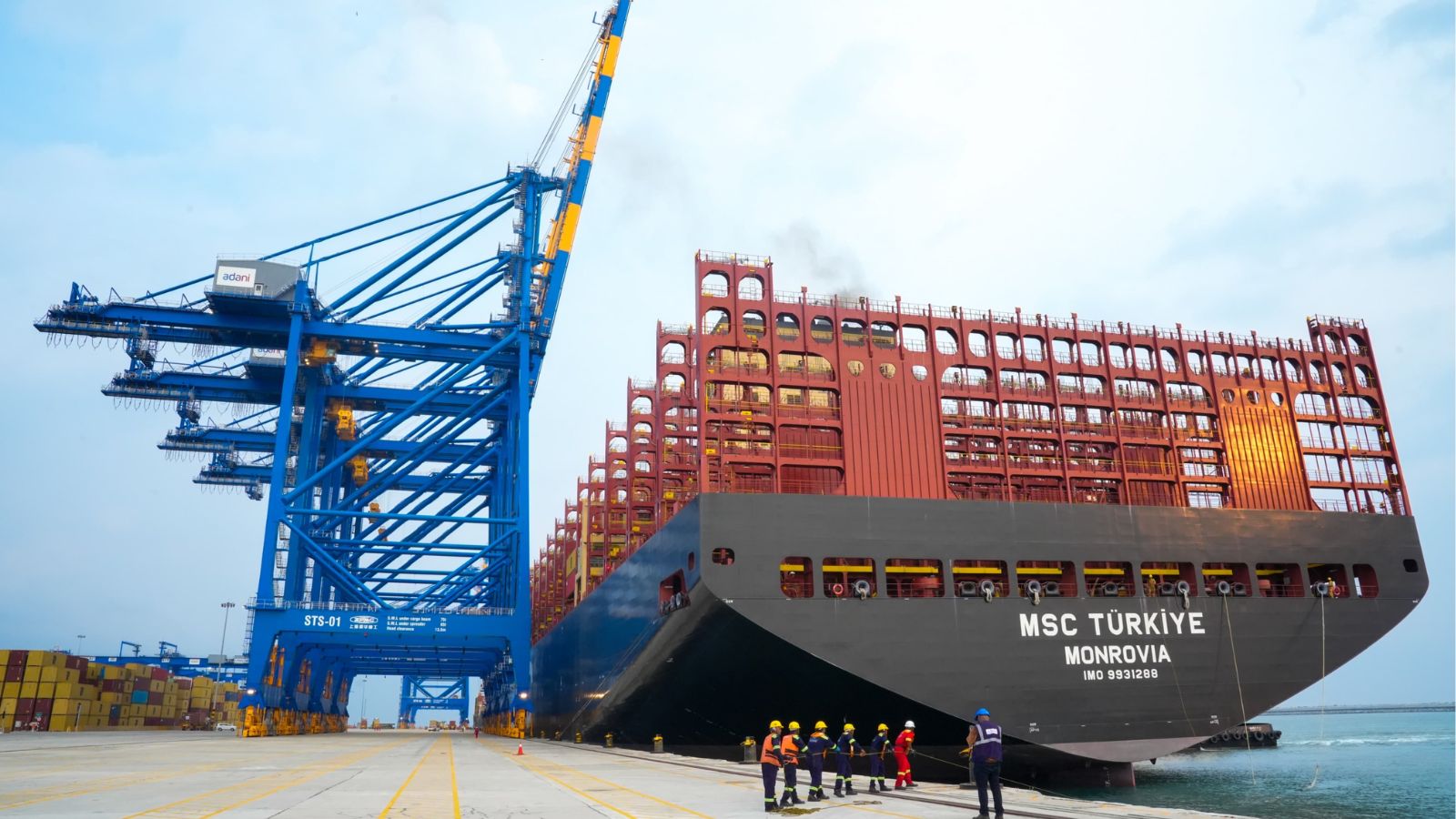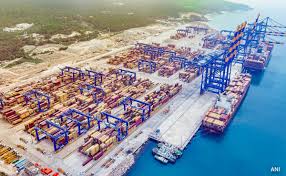In a landmark moment for India’s maritime ambitions, the Vizhinjam International Seaport in Kerala has officially opened, with Prime Minister Narendra Modi inaugurating the project in early April. This port is not just a regional infrastructure upgrade—it’s a transformative step in India’s global trade capabilities, expected to save the nation up to $220 million annually.
What Is Vizhinjam Seaport?

Vizhinjam is India’s first deepwater transshipment container terminal and the first port of its kind developed under a public-private partnership with the Adani Ports and SEZ. Located just 230km from Kochi, it boasts natural water depth between 18 and 20 meters—ideal for docking ultra-large vessels like the MSC Turkiye, the world’s largest eco-friendly container ship.
The MSC Turkiye, which docked at Vizhinjam in April, measures a staggering 400 meters in length, 61 meters in width, and can carry over 24,300 TEUs (twenty-foot equivalent units). This illustrates Vizhinjam’s capacity to host next-generation cargo ships that most Indian ports cannot accommodate.
Why Is Vizhinjam Important?
Until now, 75% of India’s container cargo was transshipped via foreign ports such as Colombo, Dubai, and Singapore. This not only increased transportation time and costs but also exposed Indian exporters and importers to inefficiencies and foreign dependency.
With Vizhinjam in operation, India can eliminate additional transshipment costs—estimated at $80 to $100 per container—and reclaim control over its critical trade routes. The port’s proximity to the East-West shipping channel—just 10 nautical miles away—further boosts India’s potential as a regional maritime hub.
Advantages of Vizhinjam Seaport
- Deepwater Access: Capable of handling the world’s largest vessels without dredging.
- Minimal Littoral Drift: Low sedimentation reduces maintenance dredging needs.
- Strategic Location: Close to international trade lanes and global shipping routes.
- Efficient Connectivity: NH-47 lies just 2km away, with railway access at 12km and Trivandrum International Airport only 15km distant.
Economic and Strategic Impact
Vizhinjam is more than a port—it is an economic catalyst. With reduced shipping costs, faster logistics, and improved infrastructure, Indian exporters can become more competitive in global markets. It also mitigates risks associated with over-reliance on foreign ports, such as geopolitical disruptions or rising port fees abroad.
Inaugurating the port, PM Modi declared, “Vizhinjam will bring economic stability to Kerala and India.” The sentiment was echoed by Kerala CM Pinarayi Vijayan and Adani Group Chairman Gautam Adani, who emphasized the port’s role in enhancing India’s trade autonomy.
Conclusion: A Maritime Game-Changer
The Vizhinjam Seaport is a visionary project that positions India as a serious player in global maritime logistics. By reclaiming transshipment traffic, reducing foreign dependencies, and offering world-class infrastructure, Vizhinjam is poised to become a cornerstone of India’s economic future. With direct access to the busiest sea lanes in the world, India can now aim to become a preferred stop for international shipping—right from Kerala’s coast.
As global trade becomes increasingly competitive, Vizhinjam may be India’s most important port project of the decade.









